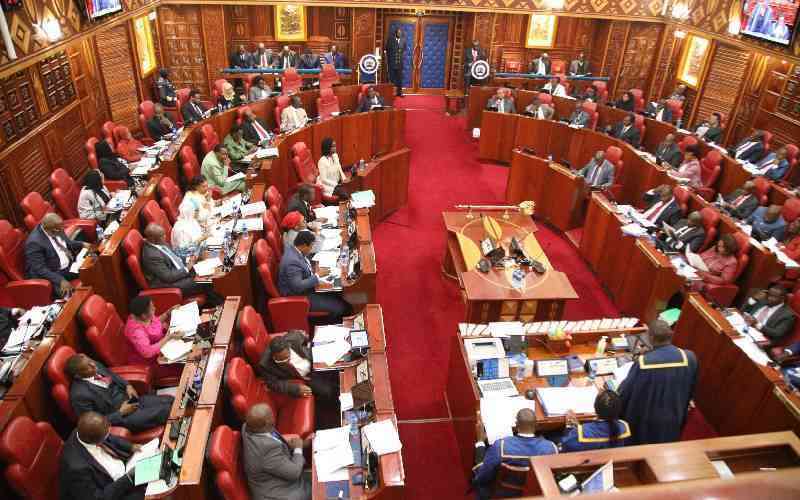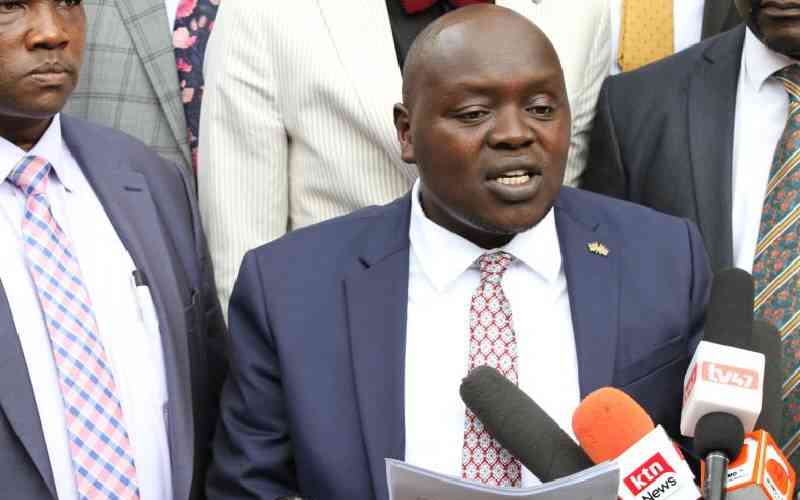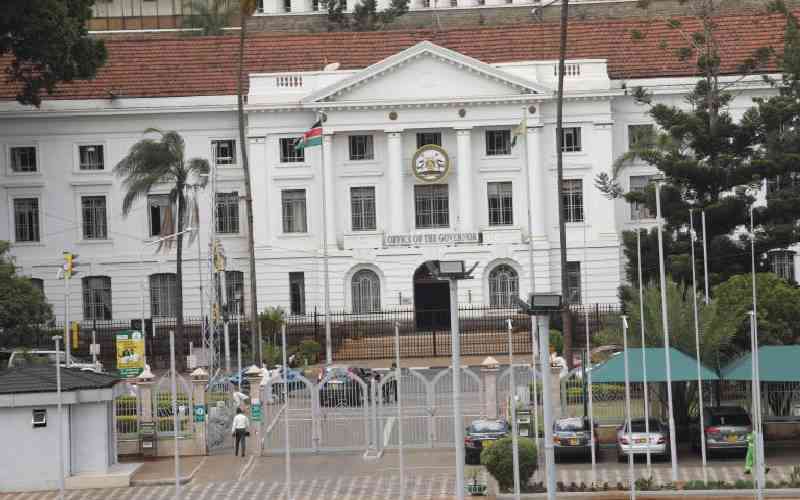By Ibrahim Abdi Saney
When Kenyans endorsed devolution as envisaged in the 2010 Constitution, they did not anticipate the kind system being espoused by some of the 47 governors.
Today, the governors could be the biggest threat to devolution. Some of them appear blinded by power; clan and political patronage, sliding us back to the same vices we sought to annihilate.
The obsession to fly flags, the grandeur for titles and demand for more funds with no match for service delivery diminishes the high value Kenyans have of devolution.
Constant fights with the National Government will only make it worse for devolution to help lift the ordinary mwananchi. Some governors have centralised services at county headquarters stopping any trickle-down of what was decentralised nationally. Sub-counties that were a beehive of activity before are today not operational and wards are merely recipients of discretionary allocation by their “Excellences”.
County Assemblies have been short-changed through corruption and intimidation. The present wave of impeachments is as a result of their dictatorial tendencies and unilateral decision-making.
Management hierarchy is linear with minimal delegation.
In Arid and Semi-Arid areas, the situation is grave. Most governors are young and well educated, representing a highly illiterate populace. They are viewed as role models required to deliver badly needed results espoused in their campaigns. These are to improve school enrolment rates, food security, reduce child mortality and grinding poverty, stop tribal clashes, cattle rusting, and increase access to water among others.
The region cried out over decades of marginalisation and consequently was most optimistic of devolution.
County budgets and activities should, therefore, invest more resources in sustainable livestock production before putting up abattoirs, deal with pasture production before establishing Hay Sheds, Dry Land Agriculture before constructing Fresh Produce Markets to avoid putting the cart before the horse.
Counties should stare at the impact of Climate Change, build coping strategies of pastoralists to reduce risks to drought and prepare community level response for effective mitigation of disasters. Any worthy arid and semi-arid land (ASAL) county should mainstream disaster management, conflict sensitivity but activities should not exacerbate droughts.
ASAL counties have inherited communities with long relief food dependency; water trucking, cash relief and worse of all pasture relief. The summation is much indignation that can be reversed by understanding governors. Governors should be servant leaders, ward off opaqueness and avoid much media engagements to define their position in society but go the full hog in valuing service delivery to the people.
The writer is the Wajir North MP
 The Standard Group Plc is a
multi-media organization with investments in media platforms spanning newspaper
print operations, television, radio broadcasting, digital and online services. The
Standard Group is recognized as a leading multi-media house in Kenya with a key
influence in matters of national and international interest.
The Standard Group Plc is a
multi-media organization with investments in media platforms spanning newspaper
print operations, television, radio broadcasting, digital and online services. The
Standard Group is recognized as a leading multi-media house in Kenya with a key
influence in matters of national and international interest.
 The Standard Group Plc is a
multi-media organization with investments in media platforms spanning newspaper
print operations, television, radio broadcasting, digital and online services. The
Standard Group is recognized as a leading multi-media house in Kenya with a key
influence in matters of national and international interest.
The Standard Group Plc is a
multi-media organization with investments in media platforms spanning newspaper
print operations, television, radio broadcasting, digital and online services. The
Standard Group is recognized as a leading multi-media house in Kenya with a key
influence in matters of national and international interest.









